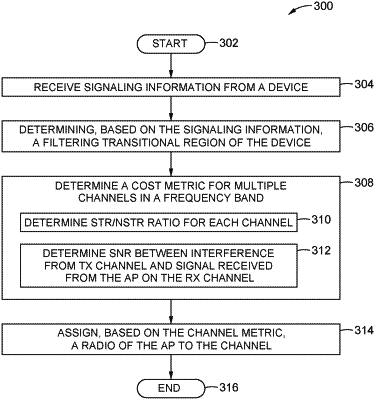| CPC H04W 28/06 (2013.01) [H04W 28/082 (2023.05); H04W 72/0453 (2013.01); H04W 72/542 (2023.01); H04W 76/15 (2018.02); H04W 88/06 (2013.01)] | 20 Claims |

|
1. A method, comprising:
determining, based on information received from a first multi-link device (MLD), a filtering transitional region of the first MLD indicating a range of frequencies where there is energy leakage due to the first MLD device operating in a simultaneous transmission and reception (STR) mode;
determining cost metrics for a plurality of channels by identifying a STR and non-STR (NSTR) ratio for each of the plurality of channels; and
assigning, based on the filtering transitional region and the cost metrics, a first radio of an access point (AP) to one of the plurality of channels to enable the first MLD to operate in the STR mode when communicating with the first radio.
|